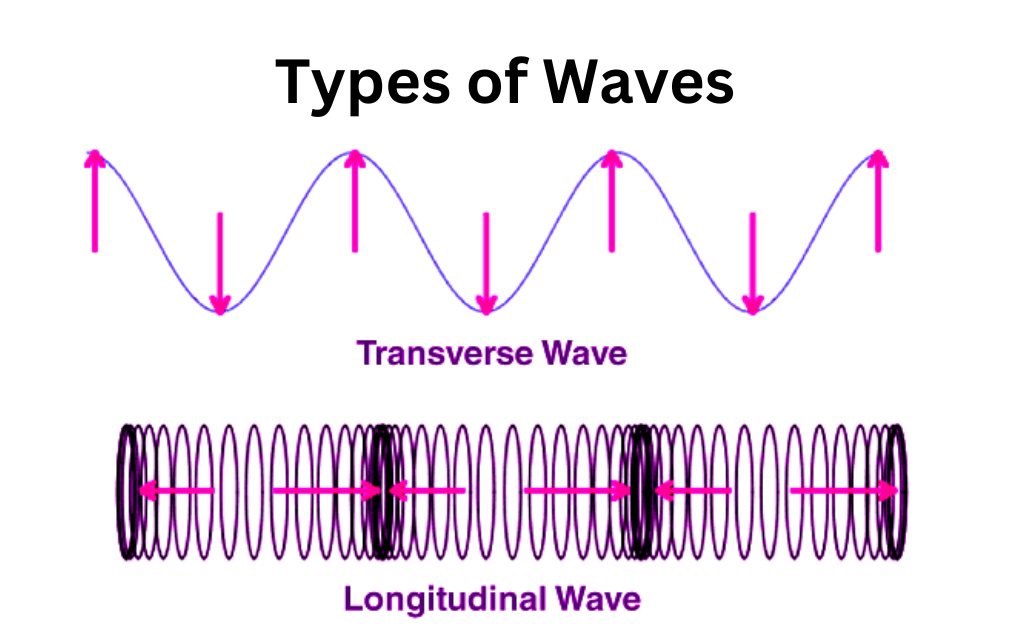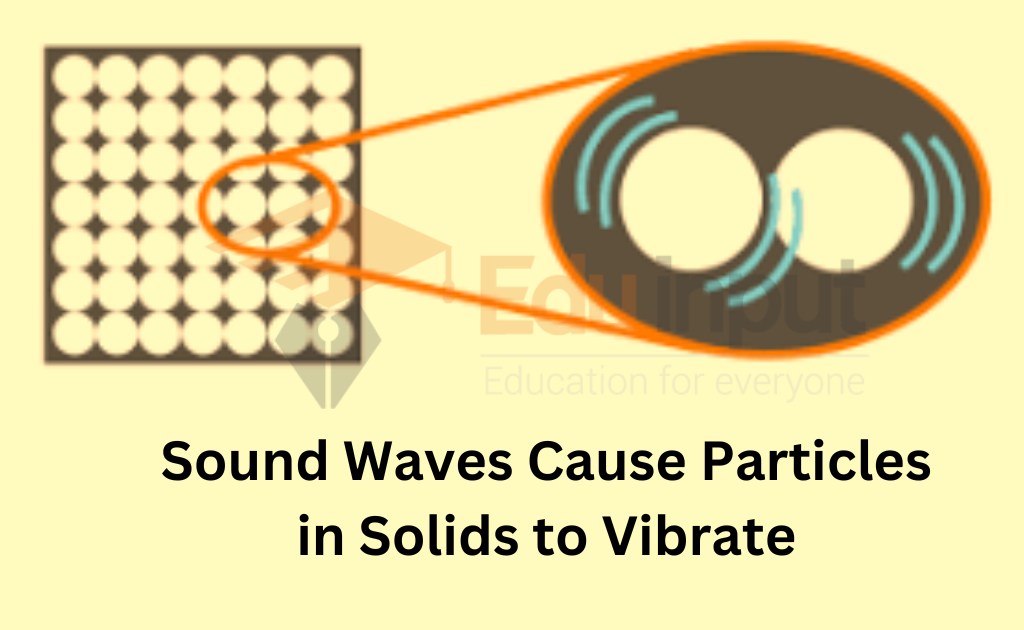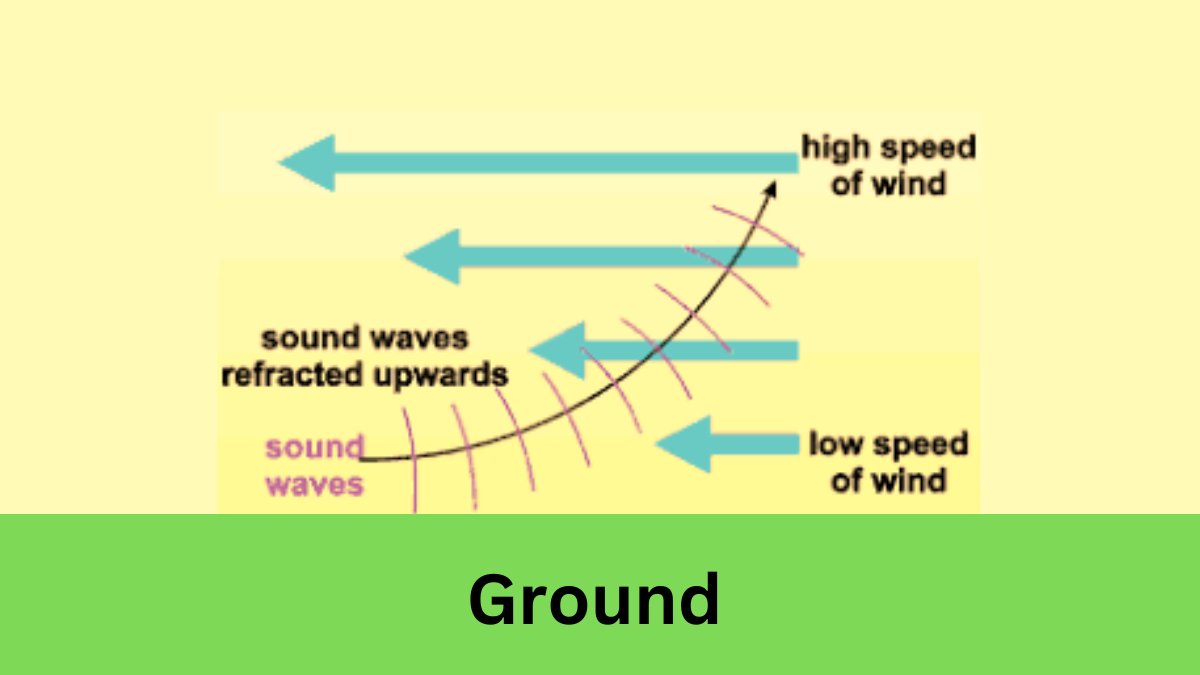Types of Waves-Definition, And Types
Physics studies many types of waves. Some waves can travel through a material medium, but other waves cannot. Let’s explore waves and their varieties in depth in this article.
What are Waves?
No physical thing travels along a wave as it sends information or energy in the form of signals from one place to another. By introducing a time element into the equation, the frequency of a wave is determined. For all of our wireless communications, waves are absolutely essential.
For instance, when you use your mobile phone to contact a buddy who lives in another city, the entire conversation is conducted through audio, but the signal is really being transmitted as a waveform from the talker to the receiver.
Your speech is converted by the phone into an electrical signal, which is then sent wirelessly or through copper cables using antennas. A wave is an oscillating flow or transfer of energy through a medium, such as space or mass.
There are many various types of waves, including those created by the ocean’s tides or waves, sounds we hear, moving photons of light, and even the motion of tiny plants carried by the wind. Here is a basic wave illustration.
Types of Waves
Depending on the direction of energy flow and the orientation of particle motion waves are categorized into three types.
- Mechanical waves
- Electromagnetic waves
- Matter waves
Mechanical waves
An oscillation of matter is what makes a mechanical wave, which transmits energy across a medium. While waves can travel great distances, the transmission medium has a restricted range of motion.
The oscillating material stays close to its initial equilibrium position as a result. Only a medium with elasticity and inertia may form mechanical waves. Transverse, longitudinal, and surface waves are the three different forms of mechanical waves. Water, sound, and seismic waves are a few of the most prevalent types of mechanical waves.
Mechanical waves convey energy like other waves do. The wave’s direction of propagation is the same as this energy’s. An initial energy input is necessary for a wave, and after this energy is provided, the wave must continue through the medium until all of its energy has been transmitted.
On the other hand, electromagnetic waves don’t need a medium to flow through them. The fact that mechanical waves’ amplitudes are calculated by dividing displacement by (reduced) wavelength is one of its key characteristics.
Substantial nonlinear effects, such as harmonic production, may happen when this approaches unity, and if they are significant enough, they may lead to chaotic events.
There are two types of mechanical waves.

- Transverse waves
- Longitudinal waves
Electromagnetic Waves
Electric and magnetic forces combine to form electromagnetic waves. Electromagnetic waves enable you to view the light and colors around you.
Here, one intriguing characteristic is that, in contrast to mechanical waves, electromagnetic waves travel without the need for a medium. The speed of all electromagnetic waves traversing a vacuum is 299,792,458 ms-1.
These are some common types of electromagnetic waves.
Matter Waves
Since they are an illustration of wave-particle duality, matter waves play a key role in the theory of quantum mechanics. Every form of substance behaves like a wave. An electron beam can be diffracted, for instance, exactly like a light beam or a water wave. However, in most circumstances, the wavelength is too tiny to actually affect daily operations.
Related FAQs
What are the 3 main types of waves?
The three main types of waves are:
Matter Waves
Electromagnetic waves
Mechanical waves
What are mechanical waves?
A mechanical wave is a wave that is an oscillation of matter and is responsible for the transfer of energy through a medium.
What are electromagnetic waves?
Electric and magnetic forces combine to form electromagnetic waves. Electromagnetic waves enable you to view the light and colors around you.
What are matter waves?
The matter wave is also called the de Broglie wave. The matter wave describes the relationship between momentum and wavelength.

 written by
written by 



Leave a Reply